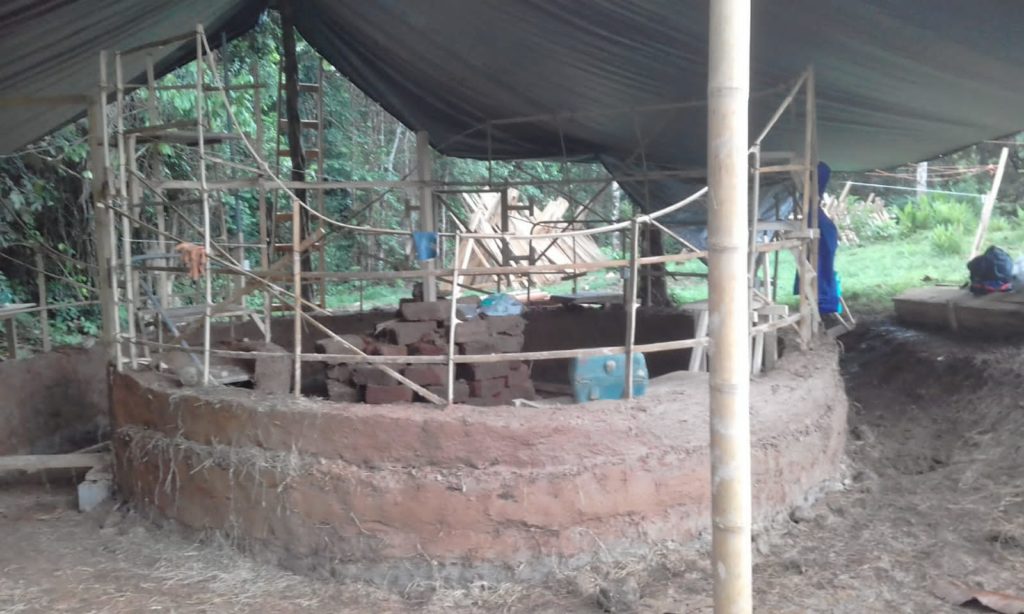
In recent years, awareness of ecological and healthy living has grown significantly.
Clay is a natural building material with low environmental impact, it is abundant, durable, renewable, recyclable and requires very little energy to process.
Clay has been used as a building material for thousands of years and it is still widely used today in many parts of the world.
Additionally, clay buildings can be highly energy efficient due to their high thermal mass, which helps to regulate temperature inside the building, it is warm in winter and cool in summer. This reduces the energy costs for heating and cooling a building.
When humidity is high, clay extracts moisture form the air, stores it and releases it again when the air is dry. Therefore it has a pleasant indoor climate. It also repels pests, is antibacterial and non-toxic.
It is a very strong and durable material, and clay buildings can last for hundreds of years if they are constructed properly. This makes clay an ideal choice for building in areas where natural disasters such as earthquakes or floods are common.
Adobe comes from the Spanish language. This description is also known in Central and South America. Adobe is one of the earliest building materials and is used by many indigenous peoples around the world.
One of the largest adobe structures: The Pyramid of the Sun in Teotihuacán, the Huaca del Sol and the Huaca Largo in Peru. In modern English, the term adobe encompasses a style of architecture that is particularly popular in New Mexico, Santa Fe, USA.
An earthen plaster preserves wood and is therefore popular as a plaster for wooden houses.
– Straw bale houses with clay plaster.
– Earthen throw: Basis is a wickerwork e.g. from bamboo, sticks, willow rods.
– Walls made entirely of clay (rammed earth).
–Different Possible application: Clay bricks, tiles or blocks.
What is the composition of clay for construction? Clay, sand, gravel and fine sand (silt). Composition varies regionally. Sometimes straw is added, which prevents cracks.
What is the composition of clay for construction?
Important to know when working with clay:
As clay dries, the clay “shrinks,” so factor this loss into the design. Clay has a long drying time (possibly up to two weeks, depending on the climate) and during the construction period it must be protected from rain. Therefore, plan well the roof overhang and foundation. Clay is sensitive to moisture and cold until it is fully cured. It shouldn’t be too hot either, otherwise it will dry too quickly. Clay walls are load-bearing, meaning they carry their own weight into the foundation rather than through another structure, so the clay must have sufficient compressive strength.
In conclusion, clay is an excellent building material that offers many advantages but it is important to work with skilled and experienced builder to ensure that the building is properly constructed and protected. The best thing is to gain as much experience as possible yourself.